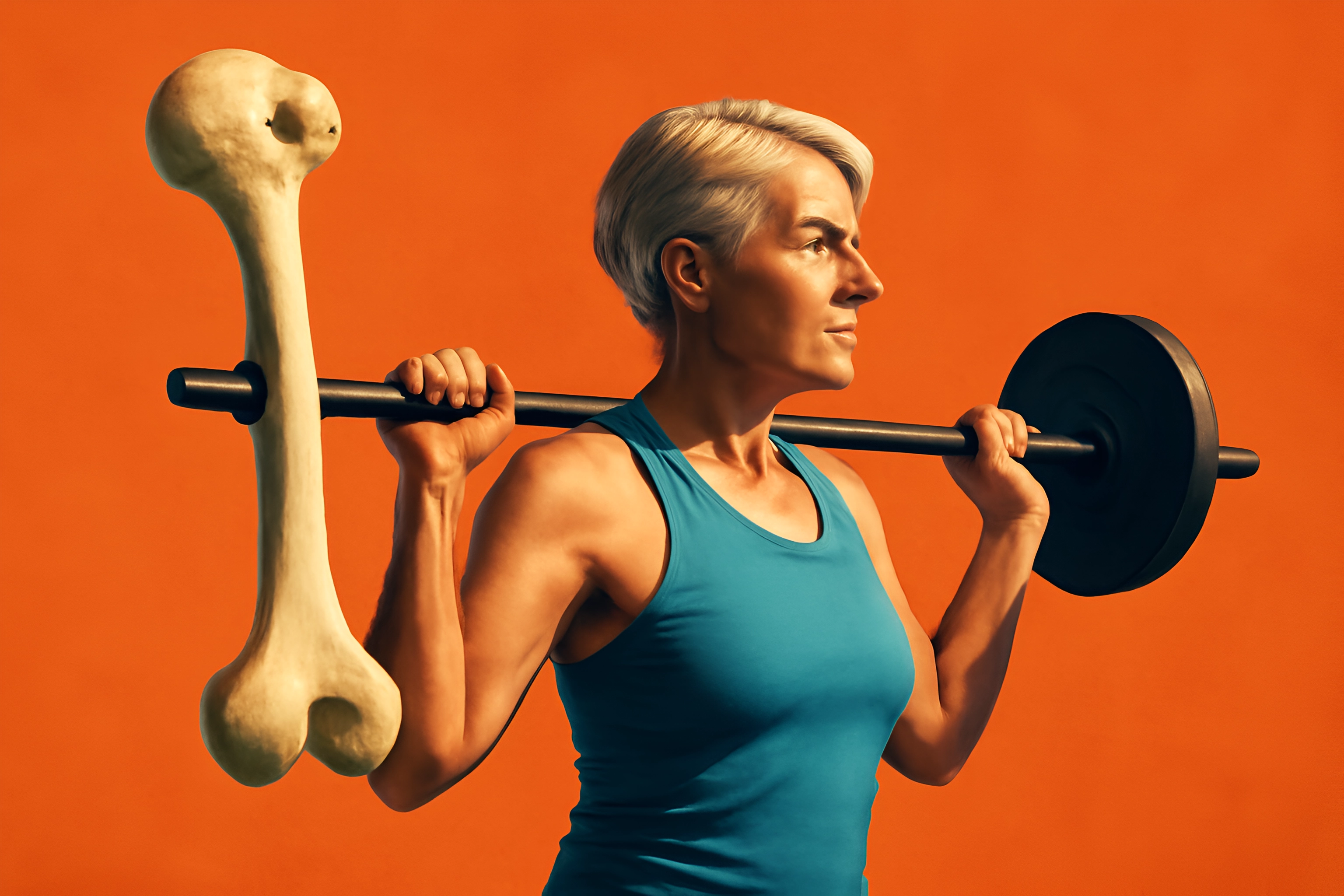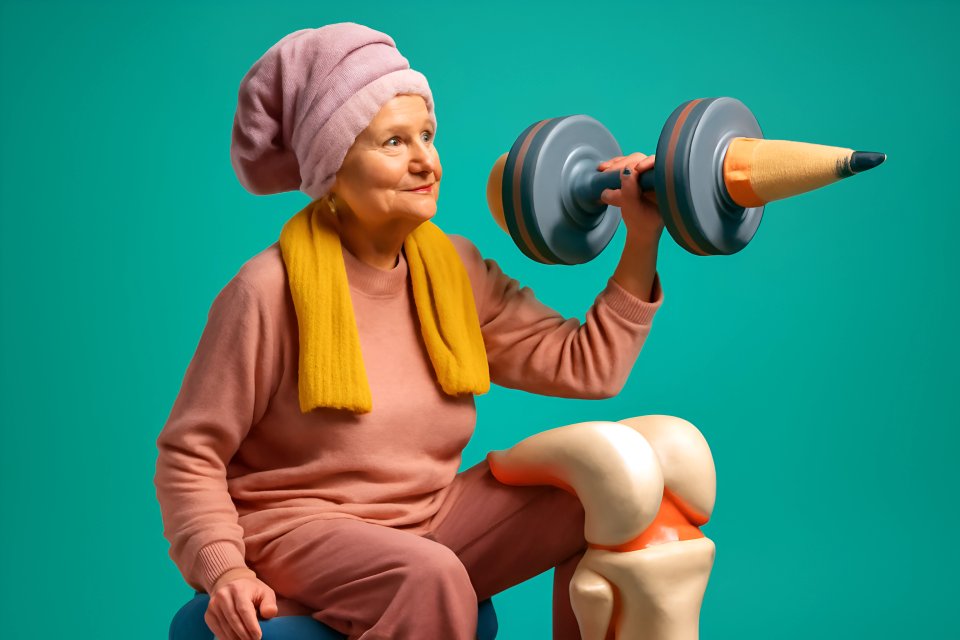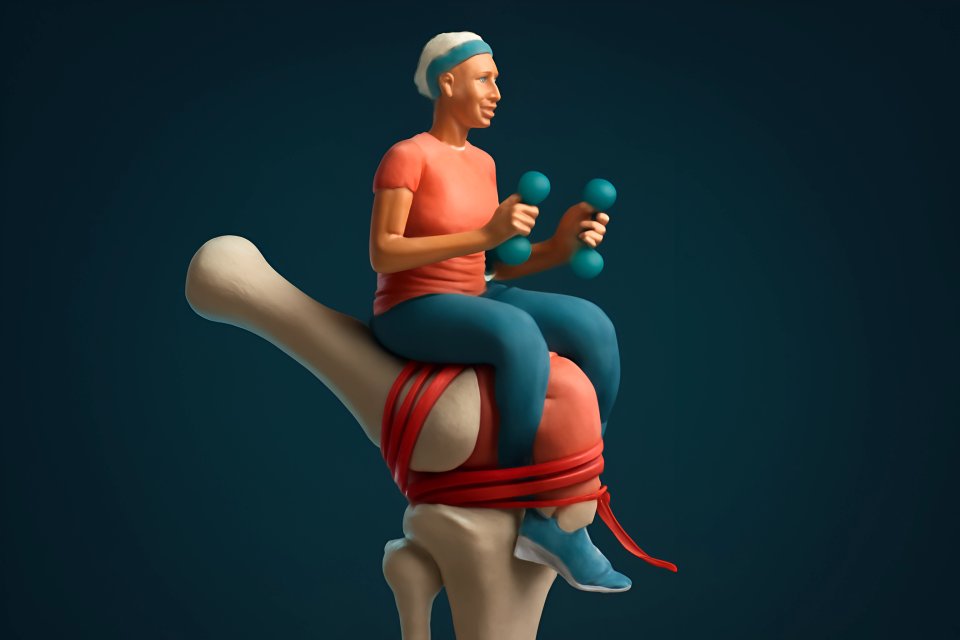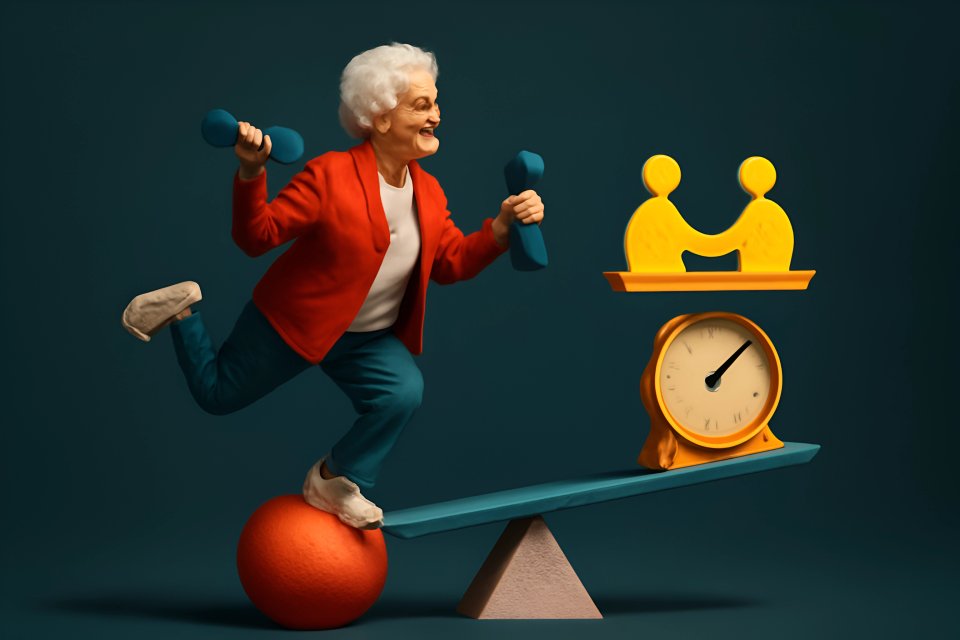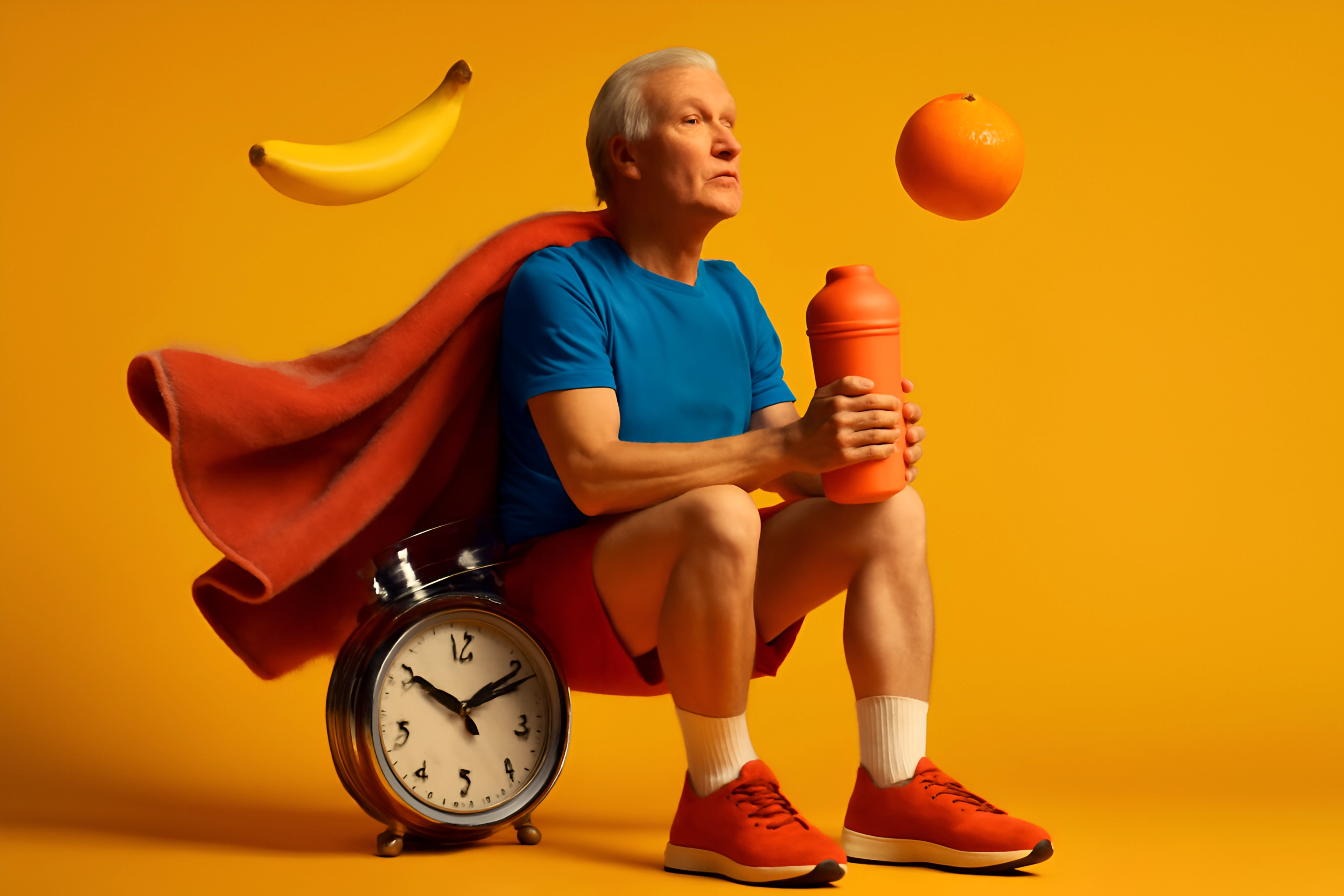
Ever feel like you're running on empty before your morning walk even begins? Or do muscle aches linger for days after a satisfying session in the garden or at the gym? You’re not alone, and it’s not a sign that you need to slow down—it’s a sign that your body is asking for a smarter strategy.
As we journey past 50, our bodies process nutrients and recover from activity in a new way. The standard "three square meals a day" that worked for decades might not be enough to support the vibrant, active lifestyle you deserve. It can leave you feeling drained, sore, and frustrated, wondering where your old energy went.
But what if you could unlock a hidden reserve of stamina and bounce back faster than ever? The secret isn't a complicated diet or a magic pill. It's a simple yet powerful strategy called nutrient timing, and it’s about working with your body, not against it. This is your guide to demystifying the concept and using easy, practical tips to fuel your workouts, slash soreness, and reclaim your vitality.
What is Nutrient Timing? (And Why It Matters More After 50)
Think of nutrient timing like fueling up your car. You wouldn't wait until the tank is empty on the side of the highway to look for a gas station; you fill it up before you start a long trip. Nutrient timing is the exact same concept for your body—it’s the art of strategically scheduling your meals and snacks around your daily activities to give your body the right fuel at the right time.
This strategy becomes a true game-changer after 50 for several critical reasons. First, we must confront sarcopenia, the natural age-related loss of muscle mass. According to Stanford's Center on Longevity, this process accelerates as we age, but proper protein timing can help preserve muscle mass and strength, which is fundamental to our independence and stability. Strategic eating also provides the foundation for boosting metabolism with daily activities, helping your body run more efficiently.
Most importantly, our recovery processes simply aren't what they used to be. Nutrient timing provides our bodies with the essential building blocks they need to repair muscle tissue efficiently, dramatically reducing stiffness and soreness. Research from Alberta Health Services confirms that older adults need more protein to support recovery from illness, maintain muscle mass, and combat the "anabolic resistance" that makes our muscles less responsive. This is why senior nutrition timing isn't just a fitness trend; it's a vital tool for living your strongest life.
The Pre-Workout Power-Up: Fueling for Sustained Energy
The goal before any activity is simple: top off your energy stores so you can move with strength, confidence, and stamina. This isn't about stuffing yourself but about providing your body with accessible fuel to prevent that dreaded mid-workout slump. You want to feel powerful from your first step to your last, whether you're walking, swimming, or enjoying a yoga class.
For best results, aim to have your pre-workout snack or small meal about 60-90 minutes before you get moving. This gives your body enough time to digest and convert that food into usable energy without leaving you feeling heavy or sluggish. It’s the sweet spot that ensures fuel is readily available in your bloodstream right when your muscles start calling for it.
Focus on easily digestible carbohydrates for quick energy, paired with a small amount of protein to protect your muscles. Think of these as your "Go" foods. Excellent choices include a small banana with a tablespoon of almond butter, a bowl of oatmeal with a sprinkle of berries, or a slice of whole-grain toast with avocado. For more ideas, check out these nutritious recipes to start your day right. You’ll want to avoid heavy, fatty, or high-fiber foods that can sit in your stomach and cause discomfort during your activity.
The Golden Window: How to Maximize Post-Workout Recovery
This is it—the most crucial time for your body. What you do in the moments after you exercise can determine how you feel for the next two days. The goal during this Golden Window is to replenish the energy you just burned and, most critically, provide your muscles with the protein they need to repair and rebuild, which is the key to getting stronger and eliminating that nagging next-day soreness.
Your muscles are like sponges after a workout, primed to soak up nutrients. You should aim to eat your recovery meal or snack within 30-60 minutes of finishing your activity. Waiting too long can slow down the repair process, leaving you feeling more fatigued and sore. Research from Stanford highlights that this timing is critical, as consuming adequate protein post-exercise maximizes muscle repair and growth in older adults.
Your "Repair" foods should be a powerful combination of high-quality protein and carbohydrates. The carbs are not the enemy here; they play the vital role of helping to shuttle protein into your muscle cells for faster, more efficient repair. Simple, effective options include a glass of low-fat milk, a protein shake, Greek yogurt with fruit, or two scrambled eggs on a piece of whole-wheat toast. Pairing these recovery tips nutrition seniors with the right exercises from a guide on adaptive resistance training for seniors creates a powerful synergy for building strength.
Don't Forget Hydration: The Unsung Hero of Energy and Recovery
In our focus on proteins and carbs, it's easy to overlook the single most important nutrient for energy: water. Dehydration is a primary culprit behind fatigue, muscle cramps, and dizziness, yet it's one of the easiest things to fix. As we age, we face unique hydration challenges in older adults because our sense of thirst can diminish, meaning we might not realize we're dehydrated until we're already feeling the effects.
Making hydration a conscious habit is non-negotiable for peak performance and recovery. Don't wait until you feel thirsty to drink. Instead, follow a simple schedule to ensure you're consistently giving your body the fluid it needs to function at its best.
A great hydration plan is simple and easy to remember. Start with a glass of water right when you wake up to rehydrate after a long night's sleep. Have another glass before your workout, sip water throughout your activity (especially if it lasts longer than 30 minutes), and be sure to rehydrate afterward to help transport all those vital recovery nutrients to your muscles and flush out metabolic waste products.
Putting It All Together: A Sample FitOverFifty Nutrient Timing Schedule
Theory is great, but seeing it in action is what makes it stick. Let's walk through a sample day to see how simple and intuitive this can be. This energy boosting food schedule is designed around a morning activity, but you can easily adapt the principles to fit your own routine.
Imagine you have a 9:00 AM brisk walk and light strength training session planned. Here’s how you could structure your day for maximum energy and recovery, integrating these strategies into a holistic meal plan for heart health after 50. This isn't a rigid diet, but a flexible template for success.
This schedule ensures you are fueled for your workout, primed for recovery, and energized throughout the entire day.
| Time | Activity | Meal/Snack | Purpose |
|---|---|---|---|
| 7:30 AM | Pre-Workout Fuel | Small bowl of oatmeal with walnuts and a sliced banana. | Provides easily digestible carbs for sustained energy. |
| 9:00 AM | Activity | Brisk walk and bodyweight exercises. Sip water. | Burns energy and builds strength. |
| 10:15 AM | Post-Workout Recovery | Smoothie with Greek yogurt, spinach, and berries. | Delivers protein and carbs to repair muscle and replenish glycogen. |
| 1:00 PM | Lunch | Grilled chicken salad with plenty of veggies. | A balanced meal to continue fueling your body. |
| 4:00 PM | Afternoon Snack | An apple with a handful of almonds. | Prevents energy dips and keeps metabolism steady. |
| 7:00 PM | Dinner | Baked salmon with quinoa and roasted broccoli. | Provides protein and nutrients for overnight repair. |
Conclusion: Small Changes, Big Results
You don't need a complete life overhaul to feel a dramatic difference in your energy and recovery. By focusing on a few key principles, you can transform how you feel every single day. Remember to fuel up with carbs and a little protein before you move, and always repair with a combination of protein and carbs within an hour after you're done. And through it all, stay hydrated.
Most importantly, listen to your body. This is a guideline, not a set of rigid rules. Some days you may need a little more, other days a little less. The goal is to become more attuned to what your body is telling you it needs to thrive.
Nutrient timing isn't about perfection; it's about empowering yourself with the knowledge to feel your absolute best. By making these small, strategic shifts, you are making a profound investment in your long-term strength, energy, and independence. You are taking control and ensuring your body has everything it needs to support your active, adventurous life. These simple habits are part of creating mindful daily routines for increased energy.
What's your go-to pre- or post-workout snack? Share your favorites in the comments below to inspire the FitOverFifty community!





